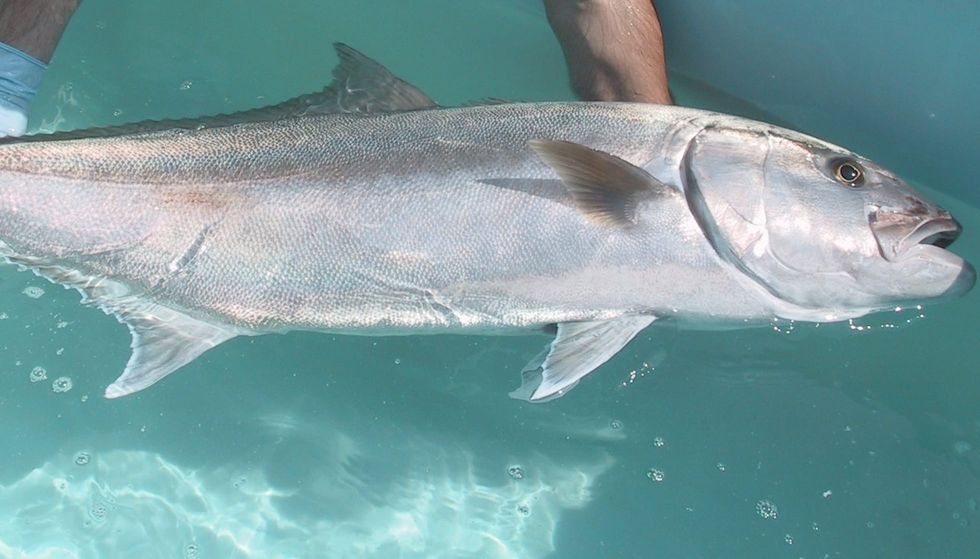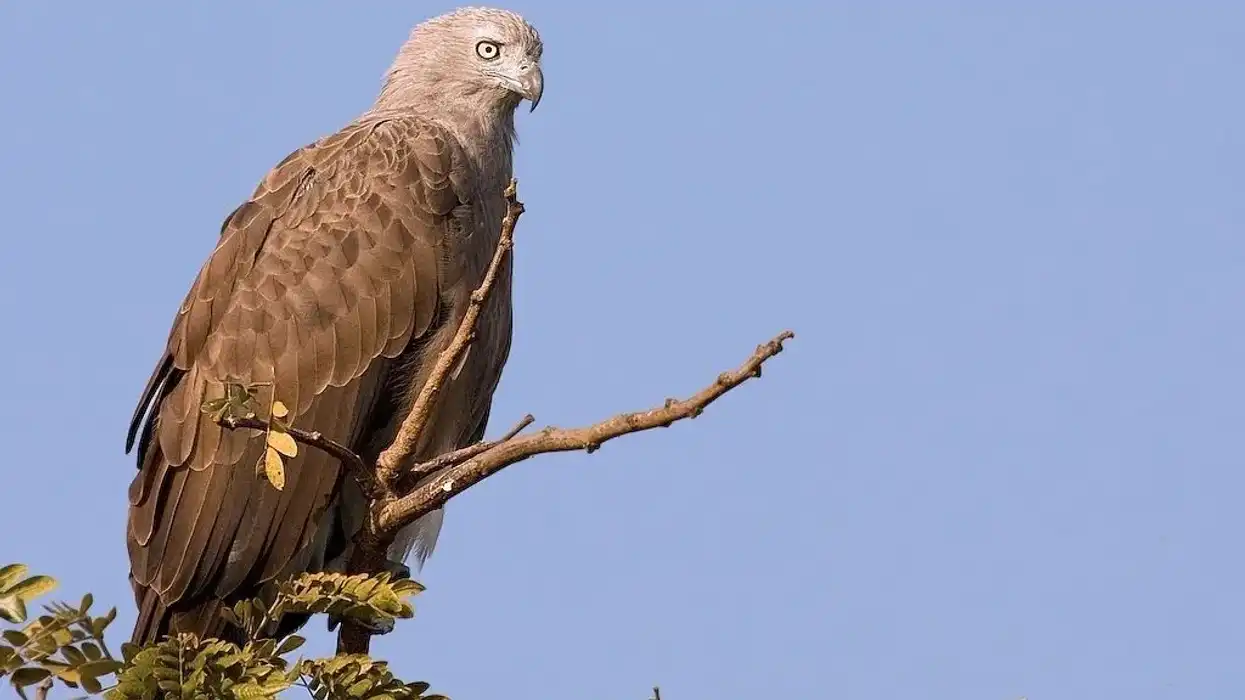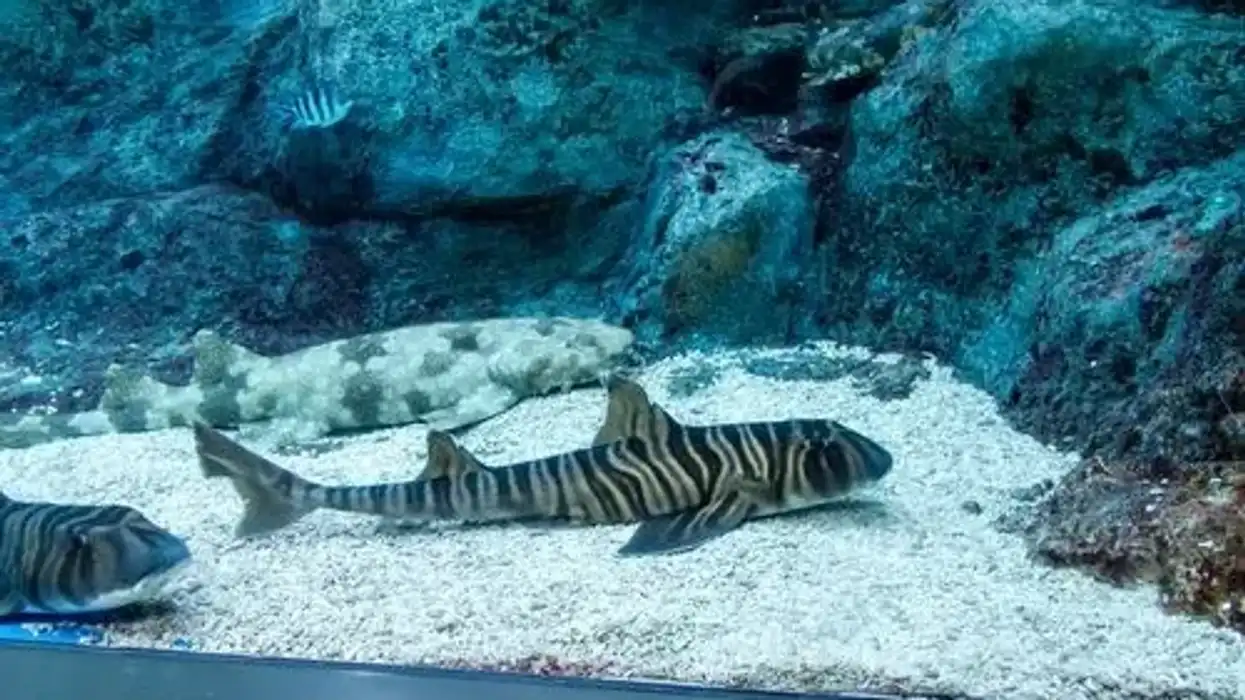If you are looking for a predatory fish that can also be safely consumed by humans, then look no further than greater amberjacks. With their scientific name being Seriola dumerili, they are part of the Seriola genus that houses other amberjacks like the lesser amberjack, banded rudderfish, and Japanese amberjack.
Being present all over the world, this fish is known by a host of different names. These are the great amberfish, jenny lind, allied kingfish, purplish amberjack, greater yellowtail, rock salmon, yellow trevally, sailors choice, reef donkey, and yellowtail.
As this fish is safe for human consumption and they are abundant in all major marine bodies, this fish has been caught in large numbers commercially. As a result of this, there have been many cases of overfishing.
This has led to the fishing season of this fish being restricted to a few months of the year along parts of the Atlantic coasts.
If you want to learn more about this fish, scroll down and read on. For information regarding other fishes, take a look at the Japanese amberjack and grayling.
Greater Amberjack Interesting Facts
What type of animal is a greater amberjack?
The greater amberjack (Seriola dumerili) is a marine species that holds the crown for being the largest of the jacks. This is a fish species that is caught all over the world for the purpose of commercial fishing.
What class of animal does a greater amberjack belong to?
The greater amberjack fish is one of the four types of amberjacks and belongs to the class of Actinopterygii. This is the class of ray-finned fishes. These fishes are part of the genus Seriola that houses many other amberjacks, some of them are thelesser amberjack, the banded rudderfish, the Guinean amberjack, and the Japanese amberjacks.
How many greater amberjacks are there in the world?
Due to their abundance and occurrence in all major water bodies, the exact population of the greater amberjack is not known.
However, in areas like the Gulf Coast in Florida and in the waters of the Gulf of Mexico, there has been a lot of over-fishing. This has led to a decline in the number of these fishes.
In other parts of the world like South Australia, the Indian Ocean coasts, and the coast of Dubai and Abu Dhabi, the number of greater amberjacks caught in commercial fishing has decreased.
Where does a greater amberjack live?
Jacks are fishes that inhabit all major water bodies of the world, and greater amberjacks are no different.
They are usually seen in almost every tropical and sub-tropical water body on the planet.
The greater amberjack species has been found along the Western Atlantic coast, in the Gulf of Mexico, Atlantic federal waters, the Gulf Coast, Florida coast, Florida Keys, the Caribbean Sea, Indian Ocean, South Australia, the African coast of the South Atlantic, the South American coast of Brazil, and even in the Mediterranean Sea.
In almost all of the places that the fishes inhabit, they are caught for fishing.
What is a greater amberjack's habitat?
The greater amberjack habitat is usually associated with rocky reefs and deep offshore holes. Apart from being associated with rocky reefs, they also live amidst the habitat of marine debris and shipwrecks.
Amidst the debris, reefs, and shipwrecks, their habitat primarily comprises the deep waters of any marine body. This reef fish is usually found at a depth of 59-236 ft (18-72 m), while there have been cases of sighting the greater amberjack as deep as 1,180 ft (360 m).
Who do greater amberjacks live with?
The greater amberjack (Seriola dumerili) can be either caught swimming alone or sometimes. Uou can also catch sight of them moving around in small to medium-sized schools of fish. This jack species is similar in this regard to other jacks.
How long does a greater amberjack live?
Unfortunately, the lifespan of this fish species has been the cause of confusion among researchers. They are thought to be similar to other jacks which have an average lifespan of 10-15 years in the wild when you do not catch them for commercial fishing.
There are some reports that confirm that the oldest caught jack of this species was around 17 years of age.
How do they reproduce?
This amberjack fish is a highly fertile species by nature. The breeding season of this fish differs based on the region it inhabits.
There are places like the Mediterranean where spawning occurs in the months of June and July. In other areas like Florida, the Florida Keys, and the Gulf of Mexico, the breeding season takes place between April and May.
Interestingly, fish that live along the coast of Belize, the breeding season is spread out over the months of February and October.
The males and females of this species become sexually mature at the age of four and five years respectively. The females may release as many as 18-59 million eggs in one spawning season with greater amberjack spawning every five days during the breeding season.
After the eggs hatch into larvae, the time taken between the larvae to develop into juveniles is around 31-36 days.
What is their conservation status?
Despite the fact that they are an easy catch for commercial fishing, the conservation status of the greater amberjacks is categorized as Least Concern by the International Union For Conservation Of Nature or the IUCN in their Red List.
Greater Amberjack Fun Facts
What do greater amberjacks look like?
The greater amberjack is a medium to large-sized species. The scales on the elongated body are usually bluish-gray or brownish when looked at from above.
However, the underparts of this fish are primarily silvery white. The two dorsal fins have multiple scales and rays on them.
The first dorsal fin has around seven hard spiny features while the second dorsal fin has multiple rays that are soft in comparison and one hardy spine.
There is also a long stripe that runs from the snout of the fish to their first dorsal fin. This stripe is black or sooty in coloration and reportedly 'lights up' when the fish is on the hunt for prey.
The fish has a large anal fin base with the anal fin being two-thirds the size of the second dorsal fin. Juveniles, on the other hand, are yellowish in coloration and there are five to six vertical bands that run along the length of their body.

How cute are they?
While this fish is not really brightly colored, some may find them cute. However, this species does not really have any discernible features that make them either cute or adorable.
How do they communicate?
Often mistaken for being a tuna, not much is really known about how greater amberjack fish communicate with the others of its species or each other. Like many other fishes, we can assume that they have certain visual and sensory cues as modes of communication.
How big is a greater amberjack?
The greater amberjack is a large to medium-sized fish that can grow as long in length as around 6 ft (183 cm). The average length of the species varies between 39-72 in (100-183 cm). In comparison to lesser amberjacks, they are almost twice as big.
How fast can a greater amberjack swim?
Unfortunately, there is no verifiable data on how fast this species of jack can swim in ocean waters.
How much does a greater amberjack weigh?
Greater amberjacks can become quite heavy. They usually weigh between the range of 40-170 lb (18-77 kg). Females of amberjack fishes grow heavier and longer than males.
What are the male and female names of the species?
Like all other fishes, there are no specific names attached to male and female greater amberjacks.
What would you call a baby greater amberjack?
A baby greater amberjack can be called a fry. Sometimes, they are also called larvae before they develop into juveniles.
What do they eat?
Being carnivorous predators of the sea, this fish feeds on crustaceans, cephalopods, sardines, bigeye scads, and other small invertebrates. Juvenile fishes are known to survive on plankton and crustacean larvae.
Are they poisonous?
While they are themselves not poisonous, greater amberjacks have been alleged to cause ciguatera poisoning in humans. This is caused due to the fish accidentally ingesting herbivorous fishes that have eaten algae that contains ciguatoxins.
Would they make a good pet?
These fishes are marine creatures and are not good fits for the aquarium setting. They are best left in their natural habitat.
Did you know...
There are tapeworms that have been found living inside these fishes. However, they are not harmful to humans when cooked for consumption. A monogenean parasite, with the scientific name Zeuxapta seriolae, has been found living in the gills of this species. The worms are inside crustaceans that amberjack fish consume.
The greater amberjack is not at the top of their food chain. They often fall prey to other larger fishes like the yellowfin tuna, sharks, and some hake species like the European hake.
Can you eat greater amberjacks?
Greater amberjacks are quite popular for consumption due to their mild-tasting flavor. They are used in many places like Japan for sashimi and sushi, while they are sold in the American markets as fish that can be easily grilled, cooked, or baked.
What is the difference between a greater amberjack vs. lesser amberjack?
There are certain differences between greater and lesser amberjacks. For starters, the lesser amberjack is smaller in both length and weight than the greater amberjack. Only banded rudderfish are similar in size to the lesser amberjack.
The lesser amberjack fish also has bigger eyes than the greater ones. They also inhabit much deeper water than greater amberjacks. However, in both jack species, the anal fin is two-thirds the length of the second dorsal fin.
Here at Kidadl, we have carefully created lots of interesting family-friendly animal facts for everyone to discover! Learn more about some other fish from our brown trout facts and Atlantic cod facts pages.
You can even occupy yourself at home by coloring in one of our free printable Greater amberjack coloring pages.










